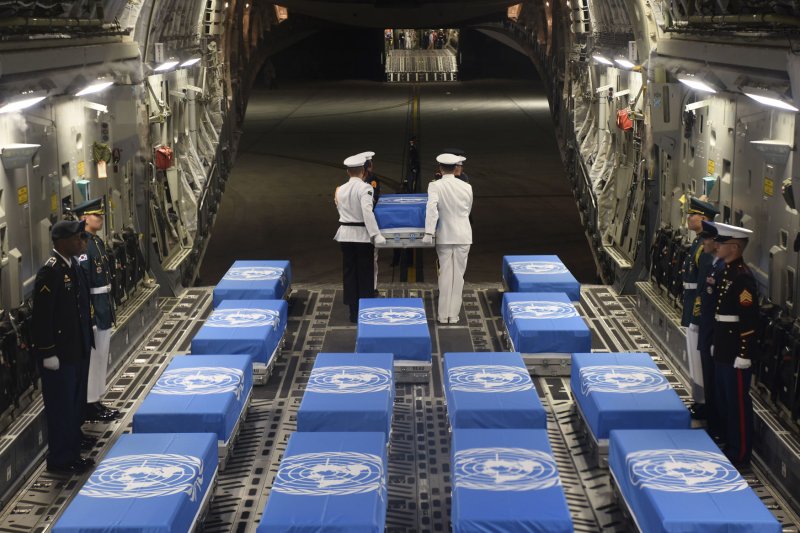Members of the United Nations Command Honor Guard move dignified transfer cases from one C-17 Globemaster III to another during a repatriation ceremony at Osan Air Base, Republic of Korea, on August 1, 2018. The UNC repatriated 55 cases of remains returned by the Democratic People's Republic of Korea. Photo by A1C Ilyana Escalona/U.S. Air Force/UPI |
License Photo
Sept. 11 (UPI) -- Some of the Korean War remains returned to the United States by North Korea have been identified, Secretary of Defense James Mattis said Tuesday.
Mattis confirmed two sets of remains out of the 55 boxes sent to the United States following President Donald Trump's summit with North Korean leader Kin Jong Un had been identified and the Department of Defense is working to identify the rest.
"It's been good work done, they moved swiftly on a couple where they thought they had a better chance for a number of reasons, where the remains came from, and what background we had, and how much we had to work with," he said, according to CNN. "So there's been already some closure for a couple of families that have waited many, many years for this."
Both service members were determined to have died in late 1950 near the Chongchon River and the remains were identified using DNA analysis and historical documents, The Wall Street Journal reported.
"One of the reasons that we were able to identify them so quickly [was because their remains] were more complete than usual so it gave us more to look at and narrow down the identity with," Dr. John Byrd, Laboratory Director of the Defense POW/MIA Accountability Agency said.
Doctors said they had conducted sampling on 23 of the 55 boxes to determine which ones could provide key verifying information.
Lee Tucker, a spokesperson at the DPAA, told UPI in July that it could take from 6-12 months to several years for the remains to be identified, depending on if there is any viable DNA to be extracted, whether there is any DNA from relatives that can be found.
Thousands of service members remain unaccounted for and Mattis confirmed the U.S. and North Korea have engaged in conversations to have additional remains returned.
"That's ongoing right now, those deliberations, consultations, all I can tell you is it's ongoing right now," Mattis said.















